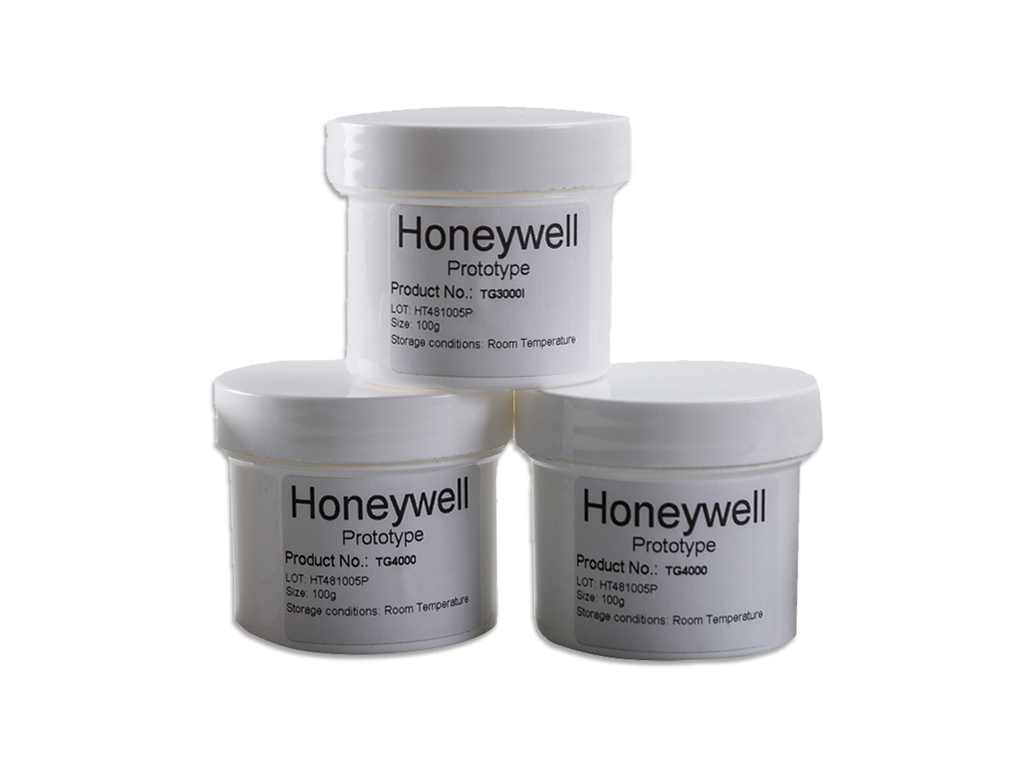TG 3000 | Thermal Grease
- 0.009 Thermal Impedance
- 3.0 Thermal Conductivity
- 25μm BLT
Product Description
TG3000 Thermal Silicone Grease is a balanced thermal grease that offers good thermal properties (3.0 TC and 0.009 TI) while also exhibiting good electrical properties. It provides superior thermal performance with ease of use across a multitude of applications. Its low viscosity and excellent thixotropy make it fit for large–scale production with dispensing, screen printing and stencil printing.
TG3000 is used for applications with advanced power density requirements. It is designed to minimize thermal resistance at interfaces, and maintain excellent performance through reliability testing. TG3000 can reach a bond line thickness of 25 micron @35psi, 50oC. Its operating temperature range is -40oC to 150oC just like the entire Thermal grease product range.
Technical Specifications
| General Properties | |||||
| Color Color The color | Gray | ||||
| Specific Gravity Specific Gravity Specific gravity (SG) is the ratio of the density of a substance to the density of a reference substance; equivalently, it is the ratio of the mass of a substance to the mass of a reference substance for the same given volume. For liquids, the reference substance is almost always water (1), while for gases, it is air (1.18) at room temperature. Specific gravity is unitless. | 2.7 | ||||
| Physical Properties | |||||
| Viscosity Viscosity Viscosity is a measurement of a fluid’s resistance to flow. Viscosity is commonly measured in centiPoise (cP). One cP is defined as the viscosity of water and all other viscosities are derived from this base. MPa is another common unit with a 1:1 conversion to cP. A product like honey would have a much higher viscosity -around 10,000 cPs- compared to water. As a result, honey would flow much slower out of a tipped glass than water would. The viscosity of a material can be decreased with an increase in temperature in order to better suit an application | 150,000 mPa.s | ||||
| Electrical Properties | |||||
| |||||
| Volume Resistivity Volume Resistivity Volume resistivity, also called volume resistance, bulk resistance or bulk resistivity is a thickness dependent measurement of the resistivity of a material perpendicular to the plane of the surface. | 1.0x1012 Ohms⋅cm | ||||
| Thermal Properties | |||||
| Thermal Conductivity Thermal Conductivity Thermal conductivity describes the ability of a material to conduct heat. It is required by power packages in order to dissipate heat and maintain stable electrical performance. Thermal conductivity units are [W/(m K)] in the SI system and [Btu/(hr ft °F)] in the Imperial system. | 3.0 W/m.K | ||||
| Thermal Impedance | 0.009 °C·cm²/W | ||||
| UL 94 Rating UL 94 Rating Flammability rating classification. It determines how fast a material burns or extinguishes once it is ignited. HB: slow burning on a horizontal specimen; burning rate less than 76 mm/min for thickness less than 3 mm or burning stops before 100 mm V-2: burning stops within 30 seconds on a vertical specimen; drips of flaming particles are allowed. V-1: burning stops within 30 seconds on a vertical specimen; drips of particles allowed as long as they are not inflamed. V-0: burning stops within 10 seconds on a vertical specimen; drips of particles allowed as long as they are not inflamed. 5VB: burning stops within 60 seconds on a vertical specimen; no drips allowed; plaque specimens may develop a hole. 5VA: burning stops within 60 seconds on a vertical specimen; no drips allowed; plaque specimens may not develop a hole | V-0 | ||||




